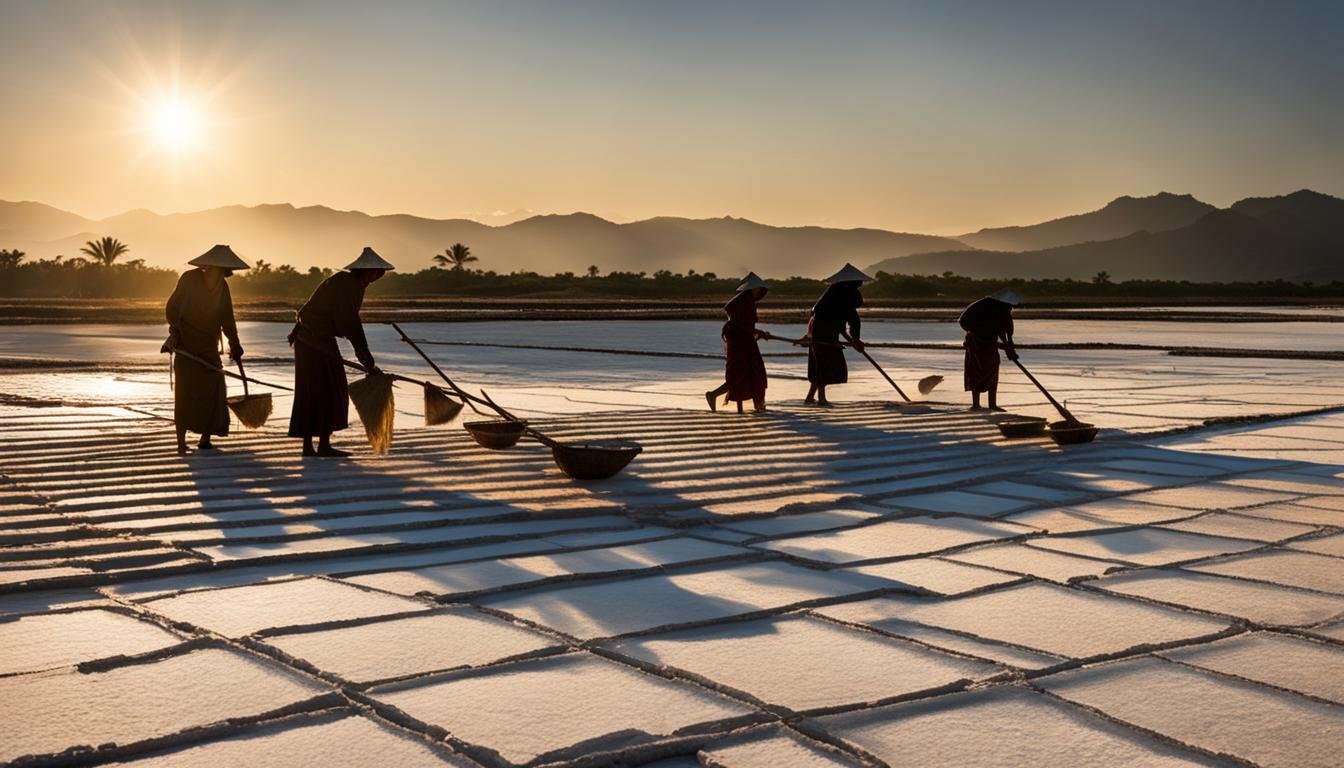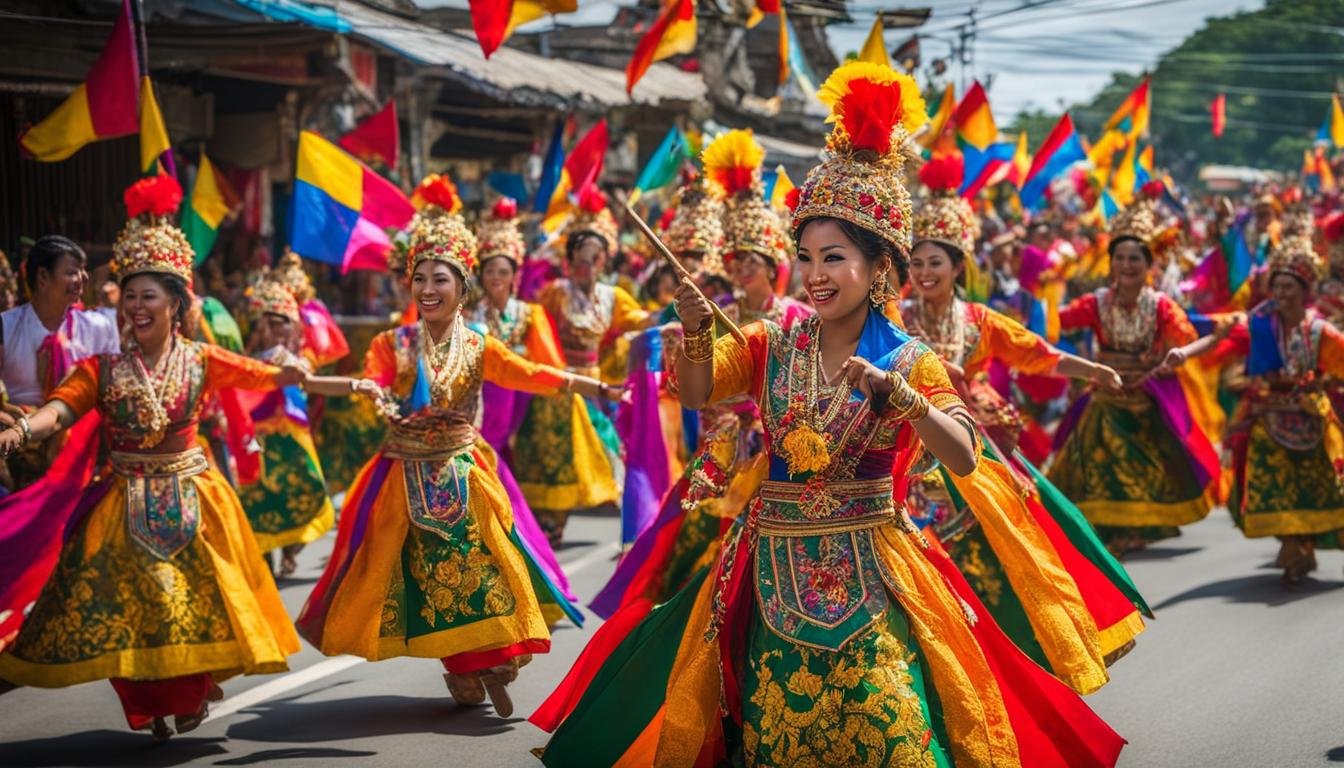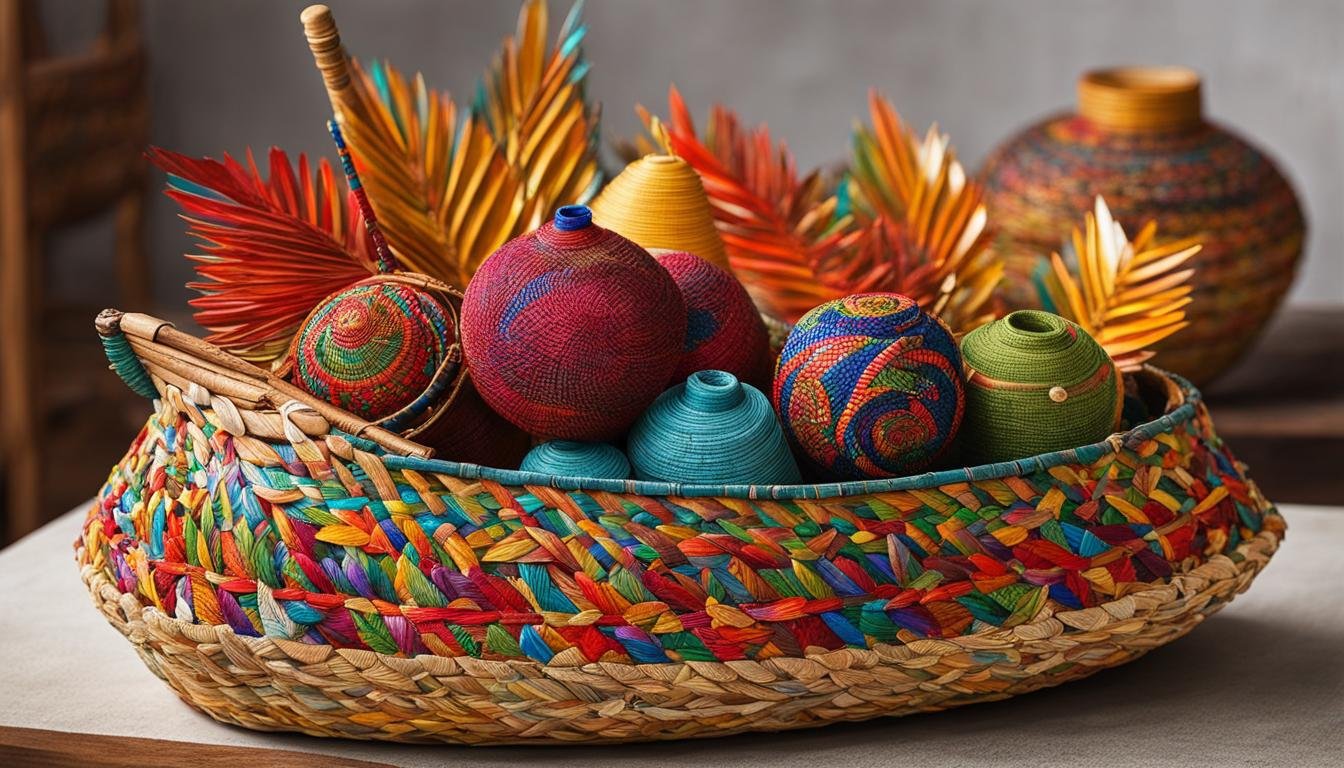Welcome to the vibrant world of arts and crafts in Pangasinan, a province in the northwest part of the Philippines. Here, creativity and tradition intertwine to bring forth a rich tapestry of handcrafted products that celebrate the cultural heritage of this remarkable region. From weaving to saltmaking, pottery to festivals, the arts and crafts of Pangasinan offer a glimpse into its unique traditions and the artistic prowess of its people. Are you ready to explore the wonders of Pangasinan’s native arts and uncover the secrets behind its time-honored crafts? Let’s embark on this cultural journey together!
Key Takeaways
- Discover the diverse and traditional crafts of Pangasinan
- Learn about the cultural significance of weaving, pottery, and saltmaking in the province
- Explore the materials and techniques used in Pangasinan’s artistic traditions
- Gain insights into the major festivals that celebrate the cultural heritage of Pangasinan
- Understand the challenges and opportunities faced by traditional craft makers in preserving the province’s artistic heritage
Weaving Traditions – The Art of Fiber Basket Weaving
Weaving is a traditional craft in Pangasinan that showcases the artistry and skill of the locals. The intricate and beautiful baskets, mats, and other woven products are a testament to the craftsmanship and cultural heritage of the province.
The weavers of Pangasinan utilize various indigenous materials to create their exquisite handicrafts. These materials are sourced locally, reflecting the deep connection between the craft and the province’s natural resources. Bamboo, rattan, and buri or raffia leaves are some of the common materials used in Pangasinan weaving.
The use of these indigenous materials not only adds an authentic touch to the crafts but also supports local sustainability and preserves traditional techniques. By incorporating natural materials, weavers are able to create unique and eco-friendly products that are highly sought after by locals and tourists alike.
Pangasinan weavers take pride in their craft, believing that each piece they create carries a part of their cultural heritage. The intricate patterns and designs, passed down through generations, showcase the creativity and artistry embedded in every woven item.
Furthermore, weaving in Pangasinan is not just a means of artistic expression but also a significant economic activity that provides livelihood opportunities for many communities. The demand for Pangasinan handicrafts has been growing, both locally and internationally, contributing to the sustainable development of the province.
Materials Used in Pangasinan Weaving
The materials used in Pangasinan weaving play a crucial role in the quality and aesthetics of the crafts. Here are some of the indigenous materials commonly used:
- Bamboo: Known for its strength and flexibility, bamboo is a versatile material used in various weaving techniques. It is often used as the base or framework for larger woven products.
- Rattan: Rattan is a type of vine that is prized for its durability and natural beauty. It is commonly used for creating intricate patterns and embellishments in woven items.
- Buri or Raffia Leaves: Buri or raffia leaves are harvested from a type of palm tree. They are known for their fine fibers, which are used in weaving to create intricate designs and add texture to the crafts.
| Material | Properties | Usage |
|---|---|---|
| Bamboo | Strength, flexibility | Base or framework for larger woven products |
| Rattan | Durability, natural beauty | Creating patterns and embellishments |
| Buri or Raffia Leaves | Fine fibers | Intricate designs and texture |
The combination of these indigenous materials and the expertise of Pangasinan weavers results in stunning handicrafts that reflect the rich cultural heritage of the province. Whether it’s a delicately woven basket or a intricately designed mat, each piece tells a story and represents the skill, dedication, and creativity of the artisans in Pangasinan.
Saltmaking – An Ancient Craft
Saltmaking has a long history in Pangasinan and has played a vital role in the development of the province. The techniques of saltmaking in Pangasinan closely resemble those used in the northern coast of Java, suggesting possible connections with Java as a point of origin. Pangasinan’s saltmaking industry has been known for producing high-quality salt, which has contributed to its reputation as a source of the finest salt in the Philippines.
Historical Importance of Saltmaking in Pangasinan

The history of saltmaking in Pangasinan is deeply intertwined with the cultural and economic development of the region. Since ancient times, salt has been an essential commodity for preserving food, enhancing flavors, and supporting various industries. In Pangasinan, the tradition of saltmaking dates back centuries and has been passed down through generations.
The geographical location of Pangasinan, with its long coastline and abundant sources of saltwater, provided the perfect conditions for salt production. The ancient saltmaking methods employed in Pangasinan involved the evaporation of seawater to extract salt crystals. These techniques were refined and perfected over the years, resulting in the production of high-quality salt that became highly sought after in the Philippines and beyond.
The saltmaking industry in Pangasinan not only contributed to the local economy but also played a significant role in shaping the cultural identity of the province. It became an integral part of the daily lives and traditions of the Pangasinense people, with saltmaking festivals and rituals held to honor and celebrate this ancient craft.
Today, despite modern technological advancements, traditional saltmaking methods are still practiced in Pangasinan, preserving the rich heritage and cultural importance of this ancient craft. The salt produced in Pangasinan continues to be revered for its purity and taste, making it a staple in Filipino cuisine and an essential ingredient in various dishes.
The historical importance of saltmaking in Pangasinan showcases the resilience and ingenuity of the local communities, who have upheld this age-old craft and passed it on from one generation to the next. It is a testament to the enduring traditions and cultural heritage of the province, serving as a reminder of its roots and the contributions of its people to the cultural landscape of the Philippines.
| Key Points | Benefits |
|---|---|
| Pangasinan’s saltmaking techniques resemble those used in the northern coast of Java. | Preservation of ancient craft traditions |
| Pangasinan is known for producing high-quality salt. | Enhancement of local economy |
| Saltmaking has cultural and historical significance in Pangasinan. | Celebration of cultural identity |
| Traditional saltmaking methods are still practiced in Pangasinan. | Preservation of cultural heritage |
Pottery and Beyond – Earth and Fire
Pottery is another traditional craft in Pangasinan that showcases the creativity and skill of the locals. In this section, we will explore the types of clay used in Pangasinan pottery and the traditional techniques employed by local artisans.
Types of Clay Used in Pangasinan Pottery
Pangasinan pottery is known for its use of different types of clay, each with its own distinct characteristics. The two main types of clay used in Pangasinan pottery are stoneware and earthenware.
Stoneware: Stoneware is a dense and durable type of clay that is fired at high temperatures, resulting in a strong and vitreous ceramic body. It is known for its natural earthy colors and is commonly used for functional pottery such as bowls, plates, and mugs. The use of stoneware clay in Pangasinan pottery ensures the longevity of the crafted pieces.
Earthenware: Earthenware clay is a more porous and softer type of clay compared to stoneware. It is fired at lower temperatures, resulting in a more rustic and textured appearance. Earthenware pottery is often adorned with intricate designs and patterns, making it a popular choice for decorative pieces. The use of earthenware clay in Pangasinan pottery adds a touch of warmth and traditional charm.
This image showcases the beauty and craftsmanship of Pangasinan pottery, highlighting the intricate details and unique forms created by skilled local artisans.
The traditional pottery techniques employed by Pangasinan artisans have been passed down through generations, ensuring the preservation of the province’s cultural heritage. Discovering the art of pottery in Pangasinan is an immersive journey into the world of earth and fire, where creativity knows no bounds.
| Clay Type | Characteristics | Common Uses |
|---|---|---|
| Stoneware | Dense, durable, and vitreous | Bowls, plates, mugs |
| Earthenware | Porous, rustic, and textured | Decorative pieces, adorned with intricate designs |
This table summarizes the characteristics of stoneware and earthenware clay, as well as their common uses in Pangasinan pottery.
The Influence of Festivals and Folk Dance
Festivals play a significant role in celebrating the cultural heritage of Pangasinan. The province is known for its vibrant festivals that highlight the traditions, customs, and arts of the local communities. Some of the major festivals in Pangasinan include the Pista’y Dayat (Sea Festival), which showcases the province’s coastal culture, and the Bangus Festival, which celebrates the local fish industry.
These festivals feature colorful parades, street dances, and other cultural performances that showcase the creativity and talent of Pangasinan’s artists and performers. The Pista’y Dayat festival, in particular, showcases the richness of Pangasinan’s coastal culture, with various activities such as beach clean-ups, sand sculpting contests, and boat races.

The Bangus Festival, on the other hand, centers around the local fish industry, particularly the famous bangus or milkfish. The festival features a grand float parade, street dancing competitions, and various culinary events that highlight the versatility of the bangus as a gastronomic symbol of Pangasinan.
These festivals not only provide entertainment and enjoyment but also serve as a platform for preserving and promoting the cultural heritage of Pangasinan. They bring the community together, fostering a sense of pride and unity among the locals.
Furthermore, folk dances are an integral part of these festivals, showcasing the traditional dances and music of Pangasinan. These dances, such as the “Pandanggo sa Ilaw” and “Malong Dance,” are performed with grace and precision, reflecting the rich cultural heritage of the province.
Through vibrant festivals and captivating folk dances, Pangasinan preserves and shares its cultural traditions with locals and visitors alike. These celebrations contribute to the overall appreciation and recognition of Pangasinan’s arts and crafts, further enriching the province’s cultural landscape.
Preserving Pangasinan’s Artistic Heritage
The preservation and continuation of Pangasinan’s artistic heritage face various challenges. The changing economic landscape, globalization, and the decline of traditional crafts pose threats to the survival of these art forms. However, there are also opportunities for traditional craft makers to thrive, such as promoting their products to a wider market through digital platforms and incorporating new designs and techniques while maintaining the authenticity of their crafts.
In today’s fast-paced world, traditional craft makers in Pangasinan encounter challenges in preserving their cultural heritage. As economic conditions evolve, there is a growing demand for mass-produced and cheaper products. This shift in consumer behavior presents a challenge for traditional craft makers who emphasize quality, meticulous craftsmanship, and the preservation of traditional techniques.
Globalization further complicates the preservation of Pangasinan’s artistic heritage. The influx of modern and foreign influences can dilute the unique cultural identity reflected in the province’s traditional crafts. It becomes crucial for craft makers to strike a balance between preserving tradition and adapting to contemporary market demands.
Despite these challenges, there are opportunities for traditional craft makers to thrive and keep Pangasinan’s artistic heritage alive. Digital platforms provide a gateway to a wider audience, allowing craft makers to showcase their products and connect with potential customers beyond geographical boundaries.
Moreover, traditional craft makers can explore new designs and techniques while staying true to their artistic roots. By incorporating contemporary elements and innovative approaches, they can attract a younger demographic and create a renewed appreciation for Pangasinan’s traditional crafts.
Efforts are underway to support and preserve the arts and crafts industry in Pangasinan. Local organizations and government initiatives aim to provide training and resources to traditional craft makers, ensuring their skills are passed down to future generations. Collaborations between craft makers and designers also contribute to the innovation and evolution of traditional crafts.
Preserving Pangasinan’s artistic heritage is a collective responsibility. By recognizing the challenges faced by traditional craft makers and embracing the opportunities available, we can ensure the continued vibrancy and cultural significance of the Pangasinan arts and crafts industry.
Conclusion
In conclusion, the arts and crafts of Pangasinan are a testament to the rich cultural heritage of the province. Weaving, pottery, saltmaking, and festivals all play a vital role in celebrating Pangasinan’s traditions and customs. These artistic traditions are not only a source of cultural pride but also provide economic opportunities for the local communities.
By preserving and promoting the arts and crafts of Pangasinan, we can ensure the continuation of these unique traditions for future generations. From the intricate fiber basket weaving to the skilled techniques of pottery-making, Pangasinan’s artistic heritage reflects the diversity and creativity of the province.
Let us celebrate the beauty and creativity of Pangasinan’s artistic heritage and support the artisans who keep these traditions alive. Through their dedication and craftsmanship, they contribute not only to the cultural landscape of Pangasinan but also to the preservation of the Philippines’ rich artistic traditions. From their hands to the world, the arts and crafts of Pangasinan continue to inspire and fascinate.
